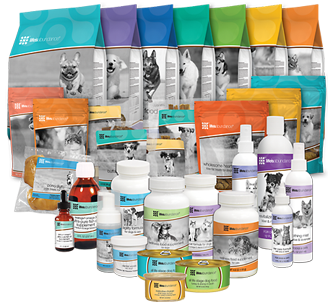Give Your Dog a Bone? Nope, Not Any More, FDA Says
06/05/2010
Knick-knack, paddy-whack, give a dog a bone — this nursery rhyme might keep rolling home, but the U.S. Food and Drug Administration says giving your family pet a bone is a thing of the past.
“Some people think it’s safe to give dogs large bones, like those from a ham or a roast,” said Carmela Stamper, a veterinarian in the FDA’s Center for Veterinary Medicine. “Bones are unsafe no matter what their size.”
The FDA released a “consumer update” in which it outlined the dangers of “giving a dog a bone.”
Stamper said that doing so “may make your pet a candidate for a trip to your veterinarian’s office later, possible emergency surgery, or even death.”
In addition to not treating your dog to a bone, the FDA also suggests that owners should throw out bones from the family’s meal in a way that is “dog proof” by either taking the trash out immediately, or placing the bones out of “dog reach” until the bones can be permanently discarded.
Stamper also cautions that the danger of bones can also crop up in your dog’s routine walk.
“Pay attention to where your dog’s nose is when you walk him around the neighborhood — steer him away from any objects lying in the grass,” Stamper said.
So why all the fuss about “no bones” for dogs? The FDA released these top 10 reasons why it’s a bad idea to give your dog a bone:
1. Broken teeth. This may call for expensive veterinary dentistry.
2. Mouth or tongue injuries. These can be very bloody and messy and may require a trip to see your veterinarian.
3. Bone gets looped around your dog’s lower jaw. This can be frightening or painful for your dog and potentially costly to you, as it usually means a trip to see your veterinarian.
4. Bone gets stuck in esophagus, the tube that food travels through to reach the stomach. Your dog may gag, trying to bring the bone back up, and will need to see your veterinarian.
5. Bone gets stuck in windpipe. This may happen if your dog accidentally inhales a small enough piece of bone. This is an emergency because your dog will have trouble breathing. Get your pet to your veterinarian immediately!
6. Bone gets stuck in stomach. It went down just fine, but the bone may be too big to pass out of the stomach and into the intestines. Depending on the bone’s size, your dog may need surgery or upper gastrointestinal endoscopy, a procedure in which your veterinarian uses a long tube with a built-in camera and grabbing tools to try to remove the stuck bone from the stomach.
7. Bone gets stuck in intestines and causes a blockage. It may be time for surgery.
8. Constipation due to bone fragments. Your dog may have a hard time passing the bone fragments because they’re very sharp and they scrape the inside of the large intestine or rectum as they move along. This causes severe pain and may require a visit to your veterinarian.
9. Severe bleeding from the rectum. This is very messy and can be dangerous. It’s time for a trip to see your veterinarian.
10. Peritonitis. This nasty, difficult-to-treat bacterial infection of the abdomen is caused when bone fragments poke holes in your dog’s stomach or intestines. Your dog needs an emergency visit to your veterinarian because peritonitis can kill your dog.
Knick-knack, paddy-whack, give a dog… well, what?
Now when you reach in your cupboard, instead of a bone, pet owners should opt for the best bone-like product that matches their dog’s diet and breed or size restrictions. Pet owners should speak to their pet’s vet to learn what suggestions they might have.
Veterinary dentist Jan Bellows recently said on NPR’s “Pet Talk” that it is important for owners to find “safe and appealing ways to satisfy the natural canine urge to chew — for their pleasure, often to expel nervous energy, and as a contribution to dental health.”
Zootoo Pet News spoke to a couple of experts to see what they had to say about dogs, bones and chewing alternatives:
Veterinarian Richard Groff and medical director of Contra Costa Veterinary Emergency Center in Concord, Calif.
“There are plenty of non-natural, safe bones, but if the pet owner wants to use a ‘natural’ bone, use an uncooked beef knee bone, which is unlikely to shatter. Never give a cooked bone to a dog: they can shatter and end up causing complications. Never use chicken bones.”
Pet author Tracie Hotchner and host of NPR’s “Dog Talk,” as well as official PETCO spokeswoman.
“Aside from bones, there are many other parts of the steer which have been formed into really healthy chews for dogs, like “bully sticks” and “pizzles.” Both are astoundingly made from bull penis and when chewed unravel in such a way as to actively brush the teeth. Also, there are Flossies, made from steer tendon.
These products are actually “eco-friendly” or “green” because they are an excellent “recycling” use of parts of cattle which would otherwise go to waste after cattle are used for the human food chain. Other excellent chew objects are pig’s ears, which are however very high in fat, and whole dried fillets of turkey or chicken breast, which are just hard enough to require vigorous chewing, but not so hard as to crack teeth as bones can do.”
But no matter how safe an alternative might be, all vets and experts recommend that owners closely supervise their pet with a chew product, especially if it is one your dog hasn’t had before.


 Life's Abundance Pet Foods
Life's Abundance Pet Foods
Leave a Reply